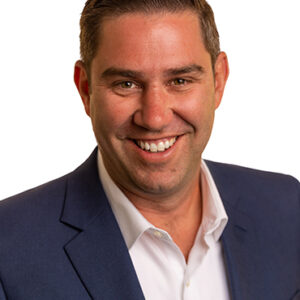When my first real-life prospective employer, Tobin’s Meat Packing, asked me why a white kid would want to work the maintenance graveyard shift with a crew that spoke no English, I said, “I am a nobody, trying to be a somebody, and I am willing to work with anybody to get there.” Believe it or not, my job was to clean the blood pit and the de-hair machine of the hog slaughterhouse—for $3.72 an hour. We all have to start somewhere.
Last month’s column generated some of the most significant email activity and supporting commentary in the 20-plus years I have been writing this column. The responses have prompted me to take a deeper dive with respect to one of the comments in that column—that is, “I consider it to be borderline criminal and, at a minimum, embarrassing that the City of Rochester has the highest poverty rate for children in the entire country.” I want each of you to know that there have been and continue to be significant efforts on the part of many individuals and organizations in the Rochester area focused on the specific issue of poverty. As a result, there are many activities and organizations that are deserving of your financial and volunteer support.
Most recently, the United Way of Greater Rochester, supported by an initial grant from New York State, formed the Rochester-Monroe Anti-Poverty Initiative. RMAPI has the lofty and aggressive goal of reducing poverty in the Rochester and Monroe County region by 50 percent over the next 15 years. In addition to the United Way, RMAPI has a wide array of support from the Finger Lakes Performing Provider System, our local legislative delegation, city leadership, and ROC the Future.
As a native of Rochester, I believe the problems and challenges facing our community, and particularly the city, are born of racial segregation in schools and our community, and the increasing wealth disparity between city and suburban residents. Over the past 50 years, the “white flight” to suburbia, me included, has contributed significantly to the core problems facing the city. It has been clearly documented that the educational performance and outcomes of the City School District are impacted by the basic issues of poverty, nuclear family dysfunction, violence, improper nutrition, hunger and more. Recent studies and reports have quantified the magnitude of the challenge ahead.
Rochester, once again, as in the past, recently ranked No. 1 in the incidence of child poverty—not something you want to be known for.
Rochester City School District educates approximately 30,000 students with a total budget of approximately $865 million, a per-student cost of $28,833.
The overall graduation rate in the city is approximately 52 percent. Not surprisingly, most suburban school districts posted much higher graduation rates.
It is increasingly clear that many, if not the majority, of City School District students do not have the basic and necessary family supports to assist and encourage academic achievement.
The disparity of wealth accumulation in the United States has accelerated since the Great Recession of 2009. The richest 1 percent of American households own 40 percent of the country’s wealth. This wealth disparity, the largest since the Great Depression of 1929, clearly demonstrates that there are more opportunities for philanthropic support to address the city’s social service challenges. My personal approach to supporting the community, as a member of the one-percenters, is to donate more than 10 percent of my income each year to charitable causes.
It is important to recognize that Rochester has an infrastructure of voluntary nonprofit organizations that other urban cities envy. In many respects, these organizations owe their existence and social service initiatives to the vision of George Eastman. More recently, Thomas Golisano, Robert and Danny Wegman, and Richard and Robert Sands have emulated the Eastman philosophy of giving back to our community. The philanthropic leadership and generosity of these individuals certainly is encouraging in the initiatives they sponsor, with the goal of developing a brighter future for the City of Rochester and Monroe County.
Charitable organizations that focus on the city’s primary issues continue to have difficulty in garnering broad-based community philanthropic support. As you consider your philanthropic and volunteer support initiatives, I would encourage you to consider the following service providers:
Action for a Better Community Inc. is Rochester’s frontline provider of service to help support and develop pre-elementary age children through its Head Start and Early Head Start programs. ABC provides services to more than 1,400 city children who need a “head start” in life.
The Urban League of Rochester, New York, among its many program services, has maintained a long history of success through its Black Scholars Awards Program. This program has proven that city students will respond to incentives, recognition and opportunities for advancement.
Ibero-American Action League Inc. offers many programs focused on the development of social and educational supports for the city’s Hispanic population. Ibero’s sponsorship of the Eugenio Maria De Hostos Charter School is just one of many initiatives that focus on improving issues facing the City of Rochester.
The Hillside Work-Scholarship Connection, for more than 30 years and with significant support from Wegmans, has become a model for successful public/private partnership. Their primary goal is to help students “overcome the barriers that cause them to drop out and abandon their education.”
Federally Qualified Health Centers, led by Jordan Health, represent the safety net of health services for thousands of city residents.
Foodlink Inc., a member of the national Second Harvest network, is dedicated to the elimination of hunger in our community. It provides food to the community through food cupboards and voluntary agencies to address the basic daily necessity of the less fortunate in our community.
The Center for Youth, Boys & Girls Club and an array of community neighborhood centers have been a mainstay in providing services and support to at-risk youth in the city for decades.
The Sisters of Mercy, Sisters of St. Joseph, and Catholic Charities of the Diocese of Rochester continue to fulfill their respective missions of supporting the poor and less fortunate in our community.
There is a number of other voluntary service providers that help weave the fabric of social support services in our community, and a plethora of church-sponsored ministries demonstrate day in and day out that the infrastructure exists to address the challenges facing Rochester. In my opinion, what has been lacking for decades is the necessary financial resources and sufficient volunteer support to meet the daunting challenge of addressing the socioeconomic issues facing the majority of the city’s population.
Do not think for a second that I believe that there is a single or preferred solution to the magnitude of the challenges described above. However, I do believe that Caucasian suburbanites of wealth and success represent a key to unlocking the future potential of the City of Rochester.
Gerald Archibald is a partner serving both of our Rochester, NY, and New York City offices.
This material has been prepared for general, informational purposes only and is not intended to provide, and should not be relied on for, tax, legal or accounting advice. Should you require any such advice, please contact us directly. The information contained herein does not create, and your review or use of the information does not constitute, an accountant-client relationship.



